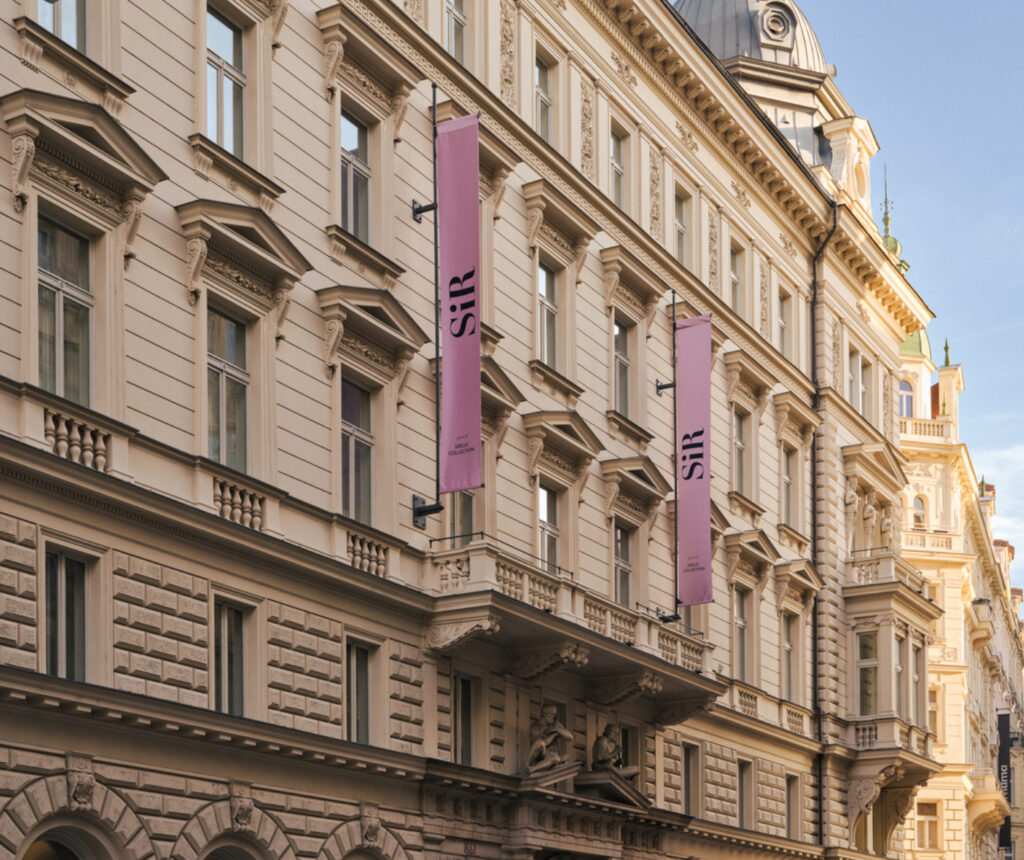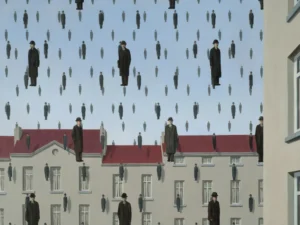

In a city where history and hedonism effortlessly dance together under Gothic spires and beneath glimmering Baroque domes, Sir Prague doesn’t merely arrive—it asserts itself. The latest gem in the Sircle Collection’s crown, Sir Prague Hotel is an architectural reverie nestled within Prague’s New Town district, steps away from the Vltava River and the kinetic whimsy of the Dancing House. But don’t mistake proximity for personality. While it is rooted in place, Sir Prague is a world of its own: a living dialogue between Bohemian myth, architectural elegance, and the intoxicating promise of modern hospitality done right.
A Dream Realized in Glass, Brick, and Storytelling
The vision for Sir Prague was never going to be just about comfort. In the saturated world of boutique hospitality, comfort is expected. What sets Sir Prague apart is its emotional literacy—its insistence on creating a feeling as memorable as the setting itself. That ambition owes everything to the Sircle Collection, a hospitality force known for cultivating narrative-rich spaces across Europe and Israel.
From the moment you walk through Sir Prague’s gleaming glass entry—framed by graceful arcs and warm wood accents—you are not merely checking in, you are entering a narrative curated with intention and craft. That narrative has two key authors: Linda Boronkay and the city of Prague itself.
The Boronkay Touch: Nostalgia Meets Contour
Hungarian-born Linda Boronkay’s imprint is not merely visible; it is felt. With her lineage—an architect father, an art magazine founding mother—it is no wonder that her approach to design is equal parts structure and soul. Her studio’s work on Sir Prague is a masterclass in contrast and cohesion. Think velvet-draped warmth against exposed concrete. Think mid-century Italian furniture beside brutalist details. Think Cubist geometry filtered through a soft, humanist lens.
Across the hotel’s 76 rooms, one finds careful attention to scale, texture, and color: muted olive greens, brushed brass, dusty rose textiles, and walnut wood converge in spaces that whisper instead of shout. Light plays a leading role. Windows are never just functional—they frame Prague’s romantic skyline like paintings in motion. That quiet beauty carries through into the hotel’s library, gym, and courtyard, each meticulously designed to balance repose with resonance.
Perhaps the most tactile expression of Boronkay’s vision lies in the artwork: a collaboration with Czech visual artist Jana Babincová, who brings the local Cubist tradition to life. Each room features a bespoke geometric piece—no two alike—bridging the city’s intellectual past with its avant-garde present. These works are not decorative afterthoughts. They are anchors, reminding guests that they are sleeping inside a living artwork.
Prague’s Past Reimagined: A Bohemian Soul with a Bauhaus Brain
Sir Prague doesn’t pretend to be a museum. But its reverence for Prague’s intellectual and cultural heritage is palpable. This is a hotel where Franz Kafka’s existential shadows are met with the optimism of post-war Czech design. Where whispers of Bohemian mysticism—from alchemical symbols to medieval folklore—are met with crisp, 21st-century efficiency.
The architecture flirts with Czech Cubism, a style born and buried in the early 1900s that now finds revival in unexpected corners of Sir Prague. The stairwells, for example, echo angular asymmetry. The lighting fixtures resemble prismatic stalactites. Even the hallway carpeting suggests geometric rupture—like the Vltava breaking through its banks in triangular currents.
What emerges is not kitsch or parody but an authentic homage. The hotel avoids the clichés that have plagued Prague’s tourist economy for decades. No faux castles. No caricatures of Bohemian excess. Instead, Sir Prague reclaims local culture on its own terms—complex, contradictory, and utterly contemporary.
Dining and Dialogue: Where the Plate Meets the Page
The culinary offerings at Sir Prague are no afterthought. The in-house restaurant, The Commons, continues the brand’s ethos of cosmopolitan comfort. The menu flits from Czech staples—svíčková with housemade dumplings—to globally-influenced fare like saffron-roasted cauliflower and sumac-dusted sea bass. What distinguishes the dining experience, though, is the sense of ease. No white tablecloths. No hushed tones. Instead, The Commons is a convivial place where digital nomads, design aficionados, and curious travelers collide.
There’s also an emphasis on local sourcing. Czech wines, especially from Moravia, make regular appearances, and artisanal spirits from neighborhood distilleries round out the cocktail list. The bar becomes a storytelling site in its own right—liquor with lineage, mixology with meaning.
Adjacent to the dining room, a vinyl library awaits. Guests are encouraged to pull records from the curated wall—ranging from 1960s Czech jazz to Berlin techno—and spin them on vintage turntables in the lounge. It’s one more instance where the hotel refuses passive luxury and instead invites participation. You don’t just listen. You engage.
Location, Location—and Liberation
If geography is destiny, then Sir Prague is blessed. Located in New Town, a district often overlooked in favor of the older, Instagrammed parts of Prague, the hotel repositions the city’s narrative center. Nearby is the Dancing House, that deconstructivist marvel by Frank Gehry. Walk a little further and you arrive at Charles Square, one of the largest squares in Europe. A brisk stroll leads you across the Vltava to Old Town, but without the weight of the tourist throngs.
Sir Prague encourages a different kind of travel: not checklist tourism, but slow immersion. The hotel provides curated walking maps that emphasize literary landmarks, hidden art galleries, and riverside cafés where you might overhear more Czech than English. It is a quiet rebellion against the commodified Prague—a refusal to flatten a textured city into Instagram moments.
A Philosophy, Not a Formula
While Sir Prague is technically a hotel, what it truly offers is a design-forward, emotionally intelligent platform for cultural exchange. The rooms are meant for more than sleep. The spaces are meant for more than staging. Guests are encouraged to write postcards in the library, not scroll on their phones. To speak to the concierge about Kafka’s Prague, not just TripAdvisor recommendations. To view the hotel not as a pause between activities, but as an activity in itself.
This is the legacy of the Sircle Collection, but Sir Prague sharpens it. Here, design is not aesthetic—it is emotional architecture. Here, hospitality is not performance—it is dialogue. Here, art is not adornment—it is invitation.
Conclusion: Sir Prague as a Cultural Compass
Sir Prague is not merely a place to stay—it is a lens through which to view a city differently. It sidesteps the tired tropes of Prague tourism and builds, in their place, a narrative of grace, intellect, and contemporary Bohemianism. It reminds us that travel, at its best, is not escape but encounter.
So here stands Sir Prague: The new kid on the block who knows its history, who reads its Kafka and reveres its Cubism, who builds not just with bricks but with belief. And in doing so, it redefines what it means to be at home in Prague.
No comments yet.








